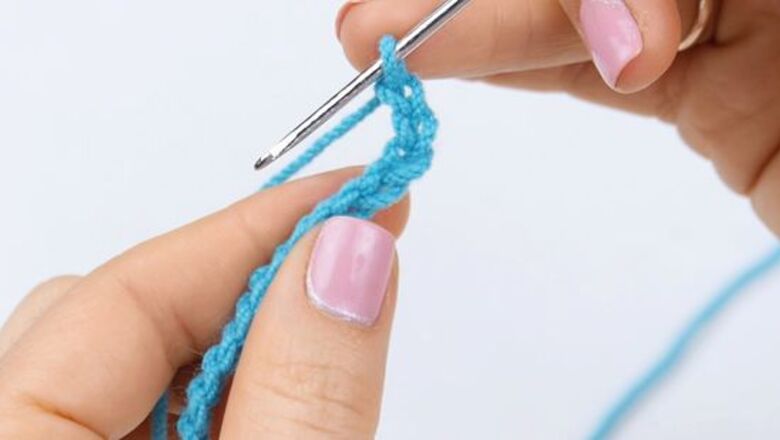
views
Turning at the End of a Row
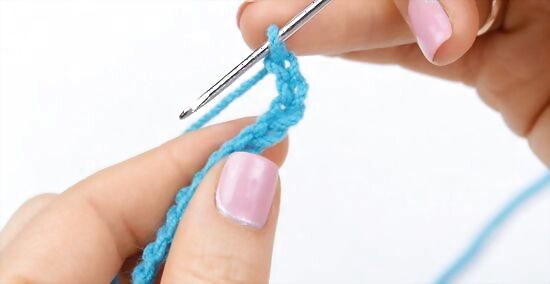
Create a turning chain. The turning chain is simply extra chains that will move you up to the next row of your crocheting. Depending on what type of pattern you’re using, you will create turning chains of different lengths. Single crochet: one chain Half double crochet: two chains Double crochet: three chains Triple crochet: four chains

Flip your work. At this point, your crochet hook should be at the far left of the piece you’re working. Simply rotate your piece of crochet so that your hook is to the right of the fabric instead of the left. Think of it as turning the page in a book.
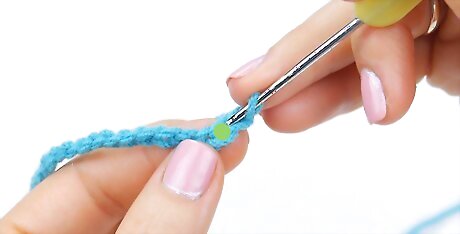
Crochet into the first stitch of the previous row. Look at the base of the turning chain you made. The space directly next to it is where you insert the hook to begin your next row.
Continue working your pattern. Work the next row in whatever stitch you’re using. When you reach the end of that row, simply repeat these instructions. Edie Eckman Edie Eckman, Crochet Expert When working back and forth in rows, you need to have a way to get from the end of one row to the beginning of the next. The usual method is to make a turning chain before rotating the piece. The turning chain serves two purposes: It forms the first stitch of the new row, lifting the work up to the proper height, and it allows you to rotate the piece so what had been the right side is now facing you as the wrong side.
Creating a Row

Make a slip knot. For the very first crochet stitch, you need to create a slip knot on your finger. Lay the yarn over your left index finger. Holding the yarn from the free end, wrap it around your finger — going under then over — making sure to cross over the original yarn. When you’ve finished, the original yarn should be on the right, and the free end should be on the left. Both the free end and the end attached to the skein should be pulled down. Pull the “original yarn” loop on the right up slightly. Cross it over the “free end” loop so they switch positions. Pull the “free end” loop, which is now on the right, up as you remove your index finger from the knot. Pull to tighten the knot.
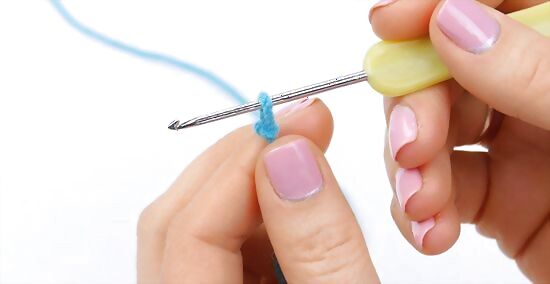
Insert the crochet hook into the loop. Make sure the loop is big enough to fit the hook through. When the hook is in, pull on both ends of the yarn to tighten the slip knot around the crochet hook.
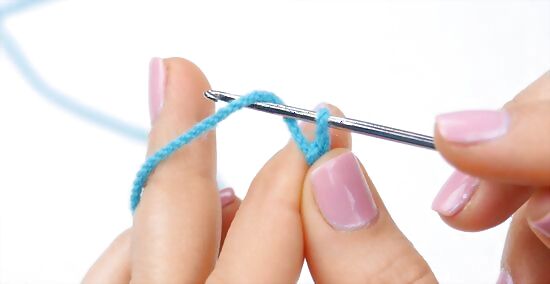
Hold the yarn and hook properly. When crocheting, you will always be working toward the left, so you will hold the yarn in your left hand and the crochet hook in your right hand. Make sure to work with the yarn that is attached to the skein, not the free end. The crochet hook should have a flattened section, where you should place the thumb and index finger of your right hand. Wrap the rest of your fingers comfortably around the lower half of the crochet hook, away from the actual hook/head. Lay the yarn across the fingers of your left hand. Raise your index finger and wrap your pinkie and ring fingers around the yarn. You will use the raising of the index finger and the grip of the pinkie and ring fingers on the yarn to create the necessary yarn tension. Let there be enough tension on the yarn. But let it be loose enough to slide through your fingers while crocheting. Grip the bottom of the loop with your thumb and middle finger.

Crochet a stitch. There are many different types of stitches and patterns, but this article will stick to the simplest: the single crochet, abbreviated sc. Make sure the yarn being held up by your index finger is behind the crochet hook. Move the head of the hook under and behind the yarn. From that position, move the head over the yarn and back to the front, catching the yarn in the hook as you do so. Pull the yarn through the loop being stabilized by your middle finger and thumb.
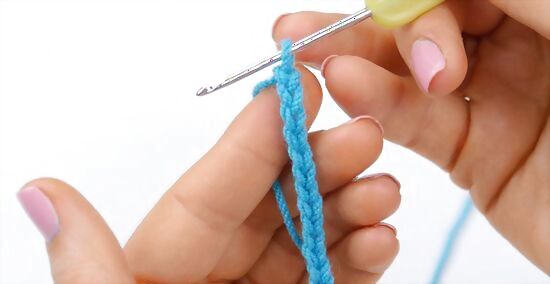
Repeat. Create a row of chains by repeating this exact process until you've reached the end of the row. Follow the instructions in the pattern you're following. If you're not following a pattern, make sure you keep track of (count and write down) how many chains you're creating per row, so your end product has an even edge.














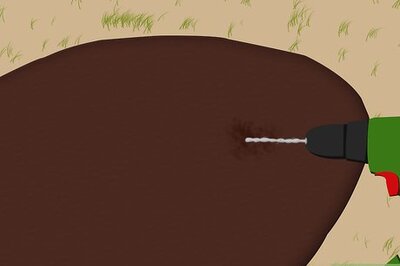

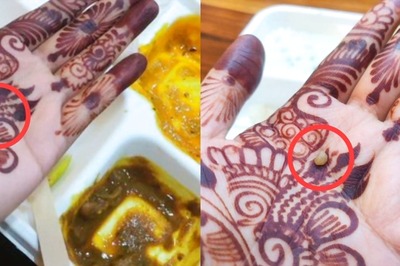


Comments
0 comment